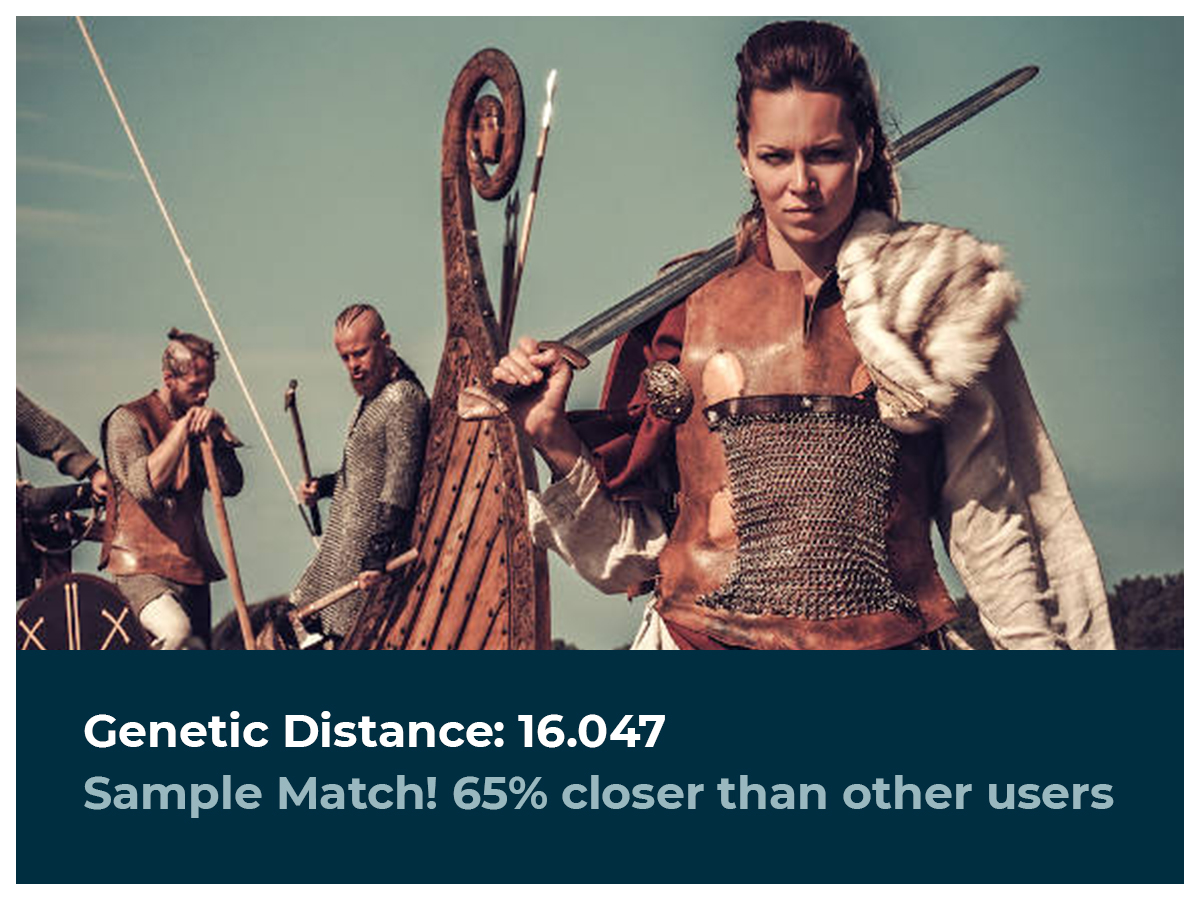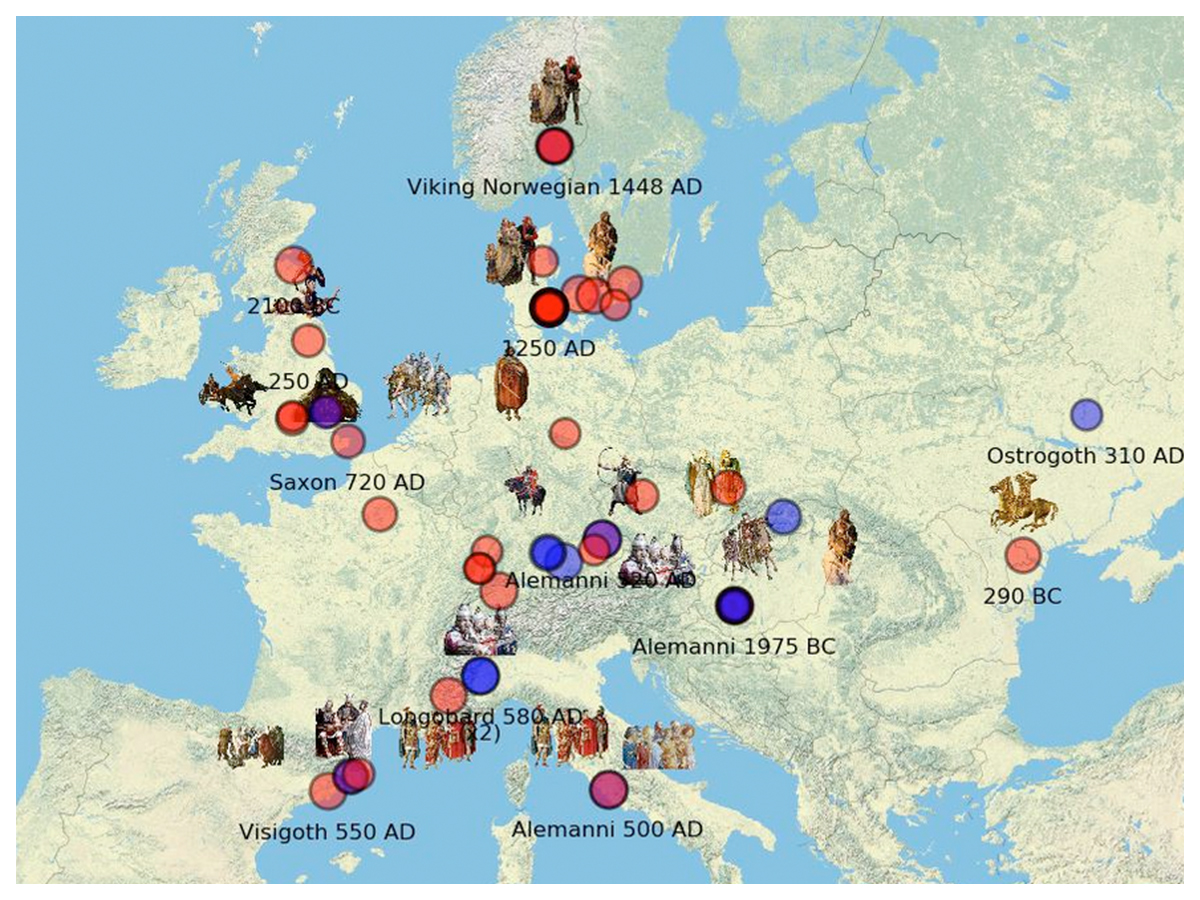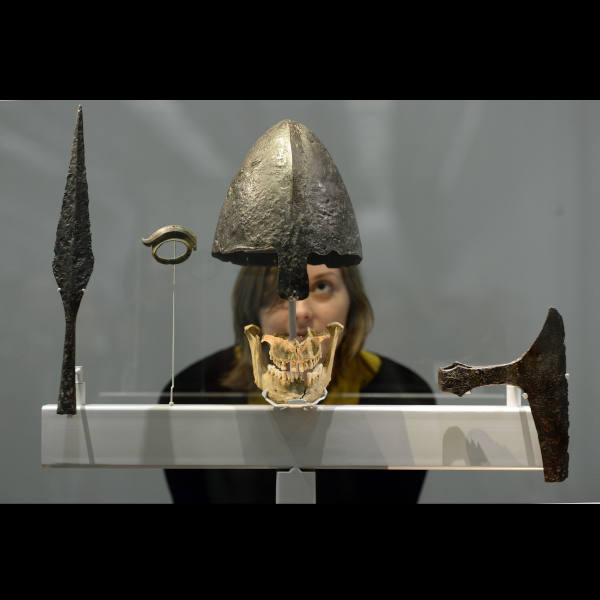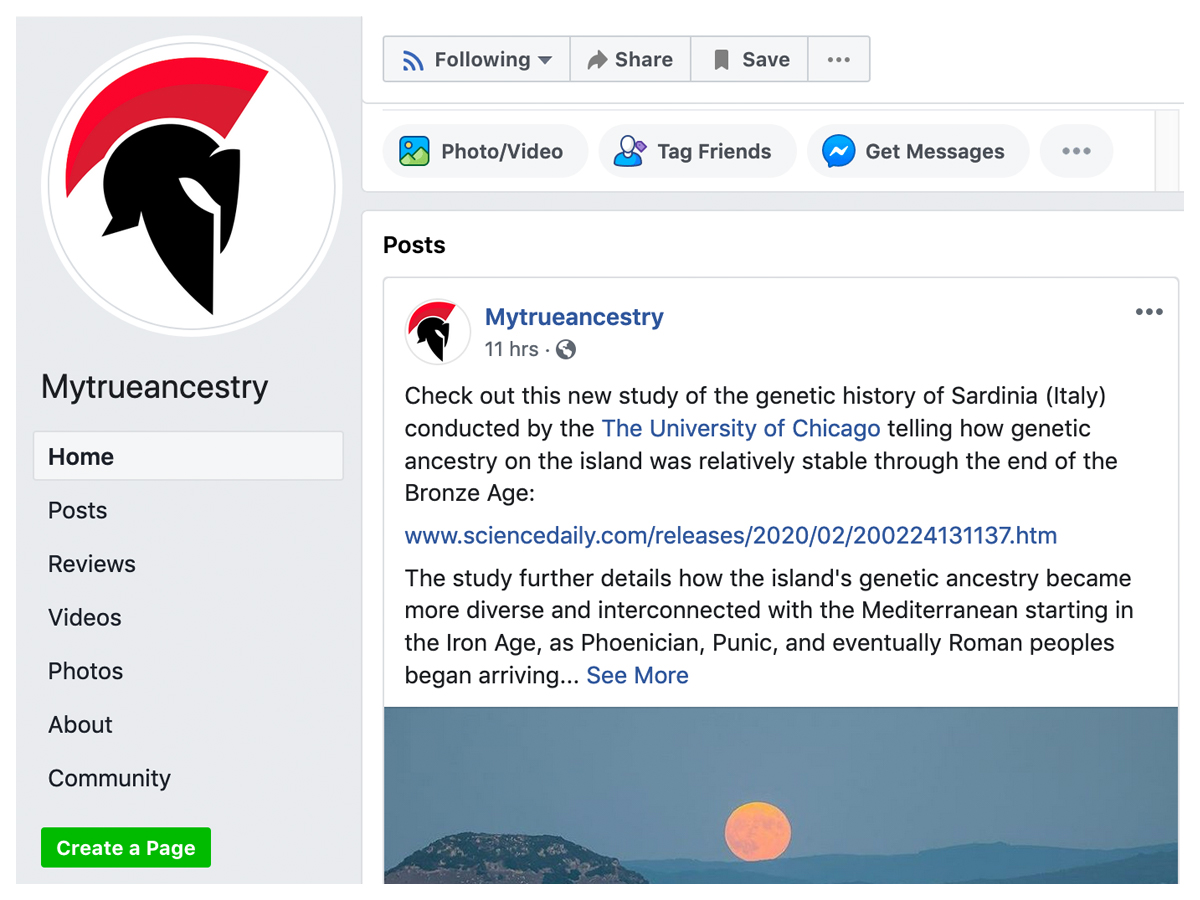Compare your DNA to 165 Ancient Civilizations
FIND THE HISTORY OF YOU
So, you've got your DNA results? To discover who you really are, you need to know where you come from. We can take your DNA results one step further through the use of advanced archaeogenetics
How It Works
Uncovering your ancient ancestry is simple with our three-step process.

Take a DNA Test
Get tested with one of the major DNA testing companies (e.g. AncestryDNA, MyHeritage, FamilyTreeDNA, DanteLabs etc.).

Download Your Raw Data
Download your raw DNA data file from your testing provider's website. We support all major formats.

Upload & Explore
Upload your DNA file to our secure platform and receive your detailed ancestry analysis within minutes.
DIG DEEP
Into Your Ancient History
Is this your Ancestor?
Your DNA will be compared to over 11,000 Ancient Individuals.

VIKING HIGH-RANKING BIRKA SHIELD-MAIDEN
brk581 (950 AD) mtDNA Haplogroup: T2b
The Birka Viking warrior was a woman buried in the 10th century, in Birka, Sweden, and discovered in the 1870s. The grave was assumed to be a "battle-hardened man" for 128 years, until DNA analysis proved she was actually a high-ranking professional warrior.
See Your Ancient Past in Action
Our selection of interactive maps will show you where, and when your genetic ancestors lived.

You can also journey through time with our ancestral timelines. With this tool, you can search your matches by ancestry, or direct DNA segments.
Why Choose MyTrueAncestry
Discover what sets our ancient DNA analysis apart from traditional ancestry services.

100% Anonymous Insights
All retained data is fully anonymized, ensuring your privacy is completely protected.

Powered by Real Ancient DNA
The only service powered by real ancient DNA samples from all over the world and advanced archaeogenetics technologies.

Try For Free
Our basic analysis is 100% free for you to try with no payment method required.
BROWSE OUR DNA SPOTLIGHTS
Jean-Paul Marat - Revolutionary France

The future French Revolutionary Jean-Paul Marat left home at the age of 16
to train in medicine and would eventually settle in Newcastle upon Tyne where he
gained a reputation as being a highly efficient doctor who also had an interest
in political writings. He moved back France 6 years later and his medical skills
earned him the patronage of the aristocracy. He used his new found wealth to
found a scientific laboratory where he began studies on fire, heat, light and
electricity - he was even visited by Benjamin Franklin. Despite his new status
and success, he began so spend a lot of time discussing and writing about social
injustice.
As Louis XVI struggled to maintain power in the late 1780s by assembling
the Estates-General for the first time in 175 years, Marat decided to end his
research and medical profession to focus entirely on his passion for politics.
He began writing on the topics of social, economic and religious reforms - this
manifested itself in numerous vicious attacks on those he proclaimed were
enemies of the people. His newspaper called for extreme violence against the
upper class and government provoking statements such as five or six hundred
heads cut off would have assured your repose, freedom and happiness. After
reaching fame, He was elected to the National Convention in 1792 where he
actively supported the death of the deposed King in a trial.
Read more here
Dorset Viking Massacre

On Ridgeway Hill in the County of Dorset, a mass burial was found with the
remains of 54 males. These individuals had all been executed in a gruesome
manner with their decapitated heads dumped together in a large pit.
Interestingly enough all of the sharp blade wounds had been struck from the
front, meaning these individuals had faced their enemy. Radiocarbon dating
showed the bodies were from 890-1030 AD. Strontium isotopes found in the bones
show these individuals were originally from Scandinavia.
The Anglo-Saxon Chronicle, which had been written around 890 AD, provides a
year-by-year account of all the major happenings in Anlgo Saxon England.
Aethelred the Unready had been king from 978-1016 AD - it is quite possible
these bodies died during his reign. Initially the king had paid Viking raiders
off with over 10,000 pounds to stop raiding their lands. Later they began hiring
Norse mercenaries to fight off the invading Vikings - however these mercenaries
would switch sides frequently and proved too risky.
Read more here
St. Brice's Day Massacre

Aethelred II, known later as the Unready, was King of the English from
978 to 1013 and again from 1014 until his death. He came to the throne at the
age of 12 after his half brother was murdered. At the start of his reign, Danish
raids on English territory began in earnest. Aethelred defended his country by a
diplomatic alliance with the duke of Normandy. The Battle of Maldon on 11.
August 991 AD involved 2,000-4,000 fighting Viking men led by Olaf Tryggvason
against the Anglo-Saxon leader Byrhtnoth who was the Ealdorman of Essex. This
ended in defeat for the Anglo-Saxons and King Aethelred was forced to pay
tribute, also known as Danegeld, to the Danish king. This payment of 10,000
Roman pounds of silver was the first example of Danegeld in England - a pattern
which would follow. The Danish army continued ravaging the English coast until a
Danegeld of 22,000 pounds of gold and silver was paid - at which point Olaf
Tryggvason promised to never return. Viking attacks only grew worse - Danish
raids would follow leading to an even larger Danegeld payment of 24,000 pounds
for peace in the Spring of 1002 AD.
The same year, Aethelred married Lady Emma, the sister of Duke Richard II
of Normandy in hopes of a stronger diplomatic alliance. On St. Brice's Day, 13.
November 1002, the confident yet paranoid King ordered the killing of all Danes
living on border towns such as Oxford. Aethelred described this massacre in his
own words: ... a decree was sent out by me with the counsel of my leading men
and magnates, to the effect that all the Danes who had sprung up in this island,
sprouting like cockle amongst the wheat, were to be destroyed by a more just
extermination, and thus this decree was to be put into effect even as far as
death, those Danes who dwelt in the afore-mentioned town, striving to escape
death, entered this sanctuary of Christ, having broken by force the doors and
bolts, and resolved to make refuge and defence for themselves therein against
the people of the town and the subrubs; but when all the people in pursuit
strove, forced by necessitym to drive them out, and could not, they set fire to
the planks and burnt, as it seems, this church with its ornaments and its
books.
Read more here

Join Our Community
New content is frequently released, and one of the best ways to stay connected is through our Instagram or Facebook pages. Connect with our global community today, and dig deeper into your ancient past.

In the press...
Also Featured on:

Contact Us:
EMAIL
INFO@MYTRUEANCESTRY.COM
MAILING ADDRESS
MyTrueAncestry AG
Seestrasse 112
8806 Bäch
Switzerland


